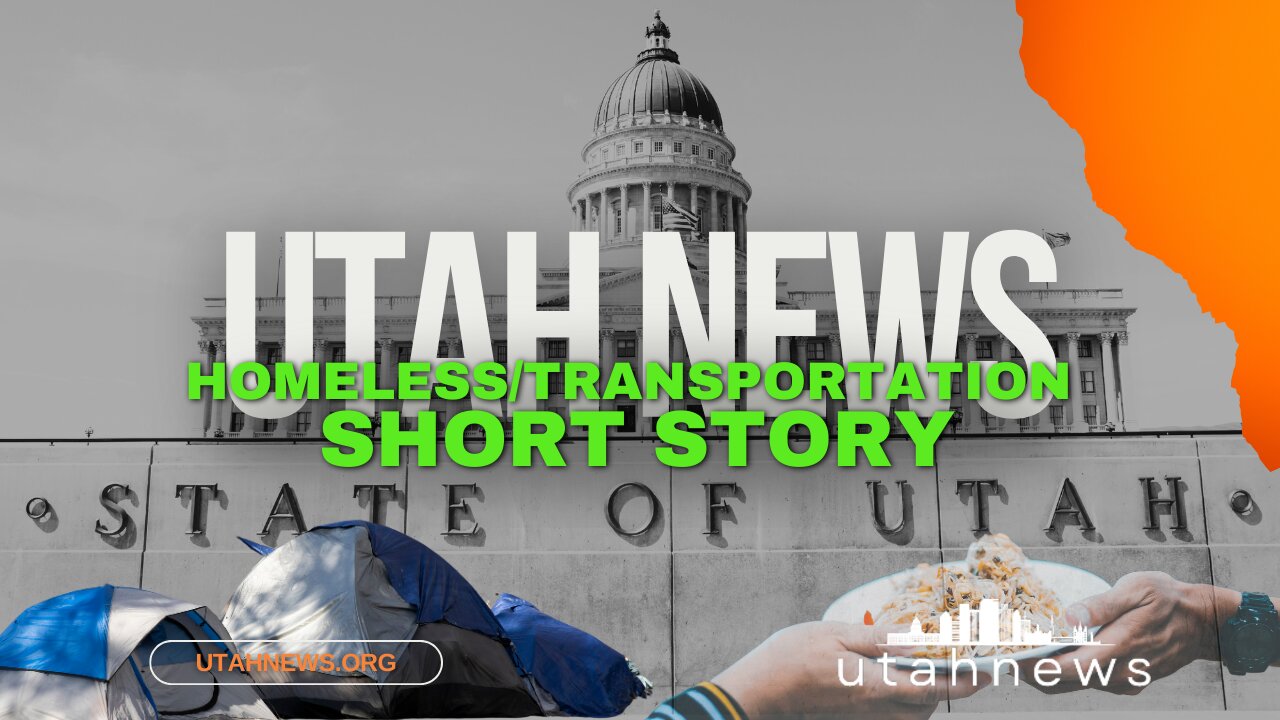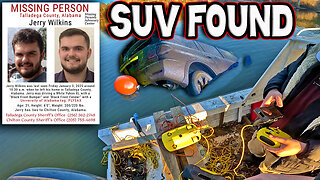Premium Only Content

Utah News | Short Stories | Homeless an Transportation
This is just a quick piece on Homelessness and Transportation in Utah. We'd love to hear your thoughts. We expand below:
Is the State of Utah failing it’s homeless population?
The closure of the large homeless shelter known as the Road Home, in Salt Lake City and its replacement with smaller facilities, followed by their complete inadequacy, which has now led to the announcement of plans to create another large center, has many local residents scratching their heads as to what their Government is doing here.
The Road Home, the large homeless shelter in downtown Salt Lake City, was closed in November 2019, it had a capacity of up to 1,100 people at its peak. The closure was part of a planned transition to a new model of homeless services with three new Homeless Resource Centers (HRCs) created with the stated intention to replace The Road Home:
1. The 300-bed South Salt Lake Men's Resource Center
2. The 200-bed Gail Miller Resource Center
3. (and) The 200-bed Geraldine E. King Resource Center
Supposedly this was designed to provide a more focused, service-oriented approach to homelessness, with a combined capacity of 700 beds.
However, it didn’t take long for poor planning and execution to reveal itself. First, as you might guess, with the total number of reduced available space led to:
Insufficient Capacity: The new centers quickly reached capacity, sometimes on a nightly basis.
Increased Unsheltered Homelessness: This was compounded by some homeless people who were reluctant to travel to the new, less centrally located resource centers, resulting in more people camping out doors in Salt Lake City. Which naturally leads to homeless encampments.https://nitc.trec.pdx.edu/news/relocating-homeless-resource-centers-salt-lake-county-what-were-mobility-impacts
Transportation Challenges: And, if that weren’t bad enough, the decentralized model created new transportation difficulties for homeless people trying to access services.
In other words, your standard bureaucratic mess.
Fast forward to today. Plans are now underway to create a new, large homeless “campus” with 1,200 emergency shelter beds.
This proposal represents a shift back towards a more centralized model, acknowledging the the boondoggle of the dispersed shelter approach.
Reasons for the Changes are as follows:
1. Capacity Issues: The smaller shelters proved insufficient to meet the demand, especially during winter months
2. Inefficient Resource Use: Creating temporary overflow beds each winter was deemed an inefficient use of resources
3. Service Coordination: A larger, campus-style shelter is seen as potentially more effective in providing comprehensive services in one location.
While the smaller resource centers are not closing, the proposal for a new large campus indicates a recognition that the dispersed model did not fully address the community's needs. The situation continues to evolve as policymakers and service providers seek the most effective ways to address homelessness in Salt Lake County.
https://ksltv.com/702330/5-salt-lake-county-sites-being-considered-for-new-large-homeless-campus/
The decision has sparked mixed reactions among local officials, homeless advocates, and the community at large. Supporters argue that this move will lead to more effective and humane solutions for addressing homelessness, while critics worry about the potential displacement of vulnerable individuals, as well as doubts raised as to how this could have been so incompetently run.
So the question arises: Why did they shut down the big facility, only to completely fail with the 3 new ones and now are looking to build an even bigger one? Was it because they KNEW all along they were going to force this sports district downtown? Build stadiums and use it for the games? Can't have homeless people in the shiny new district right? https://www.route-fifty.com/management/2024/10/six-years-ago-city-shut-down-its-massive-downtown-homeless-shelter-now-its-planning-build-even-bigger-one-salt-lake-city/400442/
It seems as though these officials are intentionally moving people into cities that do not have the resources or transportation for the services homeless need - why would they do this? How could they be so incompetent? Or is it something else? https://nitc.trec.pdx.edu/news/relocating-homeless-resource-centers-salt-lake-county-what-were-mobility-impacts "Transportation has to be key to the design and siting of services. Transportation and access to basic resources are so interlinked; we need to be thinking from more of a comprehensive planning framework," said Sarah Canham, principal investigator on the project. " and "RECOMMENDATIONS FOR POLICY AND PRACTICE
Based on the data from surveys and interviews, the research team came up with several recommendations for policymakers and practitioners to improve mobility for persons experiencing homelessness. Several of these improve options for transportation on demand:
Develop ride hailing and bike sharing programs to address transportation challenges. Partnership programs could arrange for free or discounted rates for Uber or Lyft, and bike share programs.
Increase shuttle availability through additional funding to resource centers that could support a more robust van transportation model, with more staff and vehicles.
Increase transit frequency while reducing cost. As one service professional pointed out in an interview, "On lines where we know there are homeless shelters, it would be great to have more bus routes." Another service provider said, "I think the number one thing that we could do is take away the monetary barrier associated for someone experiencing homelessness to riding the bus or to riding TRAX." While participants acknowledged the ability for some riders to get free or reduced transit UTA passes, eligibility requirements limit these programs." Now consider what has been forced across the state... bike lanes and reducing car lanes, trails, mass transit hubs and a CORRIDOR system. Can you guess why they want to force mass transit hubs and a full corridor connection in smaller cities?
-
 LIVE
LIVE
tacetmort3m
23 hours ago🔴 LIVE - SOLO RANK GRINDING CONTINUES - MARVEL RIVALS
3,244 watching -
![Shadows Of Chroma Tower, Alpha Playtest [Part 1]](https://1a-1791.com/video/fwe2/1d/s8/1/5/Q/U/n/5QUnx.0kob-small-Shadows-Of-Chroma-Tower-Alp.jpg) LIVE
LIVE
iViperKing
12 hours agoShadows Of Chroma Tower, Alpha Playtest [Part 1]
1,442 watching -
 54:05
54:05
TheGetCanceledPodcast
10 hours ago $10.50 earnedThe GCP Ep.11 | Smack White Talks Smack DVD Vs WorldStar, Battle Rap, Universal Hood Pass & More...
92.5K18 -
 13:37
13:37
Exploring With Nug
14 hours ago $6.39 earnedSUV Found Underwater Searching For Missing Man Jerry Wilkins!
61.9K4 -
 2:58:21
2:58:21
xBuRnTx
8 hours ago1st Warzone Stream Online
44.2K2 -
 6:10:21
6:10:21
JdaDelete
1 day ago $8.31 earnedDino Crisis - Sega Saturday
89K4 -
 23:22
23:22
MYLUNCHBREAK CHANNEL PAGE
1 day agoUnder The Necropolis - Pt 5
81.6K33 -
 2:26:11
2:26:11
Jewels Jones Live ®
2 days agoWINNING BIGLY | A Political Rendezvous - Ep. 108
143K44 -
 2:04:49
2:04:49
Bare Knuckle Fighting Championship
4 days agoBKFC FIGHT NIGHT MOHEGAN SUN FREE FIGHTS
71.3K7 -
 25:09
25:09
BlackDiamondGunsandGear
11 hours agoYou NEED to be Training For Whats to Come
49.3K11